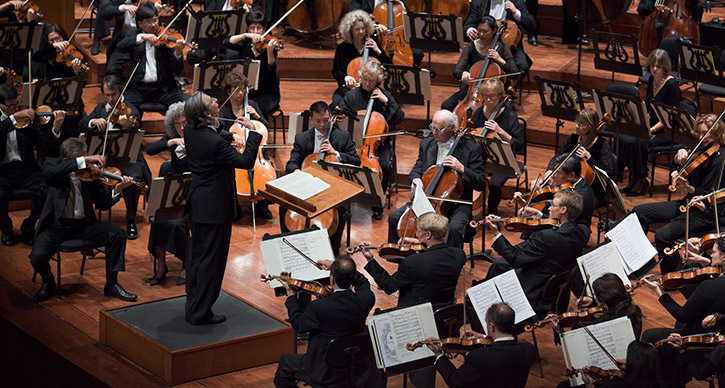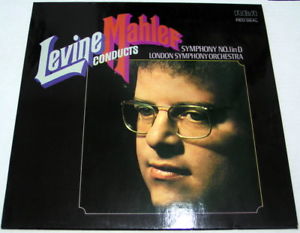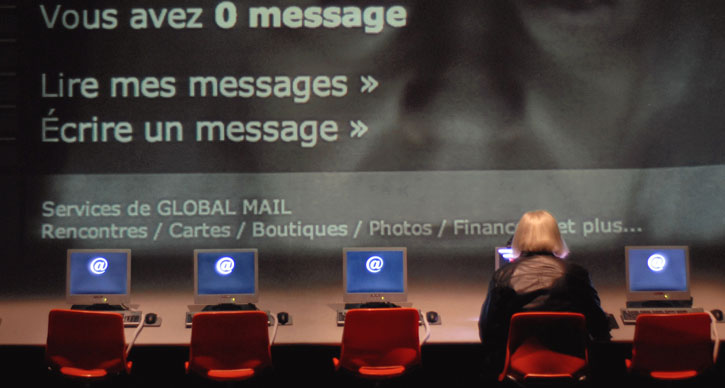UMS Documentary Wins EMMY Award
We are honored to report that our “A Space for Music, A Seat for Everyone” documentary has just won the ‘Best Historical Documentary’ EMMY at the Michigan EMMY award! Thank you to everyone who worked on the film and congratulations! Our own Sara Billmann holds the award in the photo above.
Watch the film in full on ums.org.
UMS Playlist: Classical Music Old Friends from Communications Director Sara Billmann
This post is a part of a series of playlists curated by UMS staff, artists, and community. Check out more music here.

Photo: San Francisco Symphony, who’ll perform Mahler Symphony No. 7 at Hill Auditorium on November 13, 2014.
I grew up in a small town in Wisconsin and studied piano from age 5 and oboe from age 11 in a family where music was central. My mother was a piano teacher, taught vocal music in the public schools, and directed her church choir; my sister became a professional horn player and freelances in New York; and even my father, a middle school math teacher for over 35 years, participated by periodically singing in a local chorus and playing the baritone in a local German band.
Because of that background, I was constantly exposed to classical music, but there are some pieces that stand out as having made an incredible impression on me as a young musician from the time of middle school until early college. While my tastes have certainly evolved over the years, these are still my “old friends” that I love to revisit and never grow tired of.
Mahler’s Symphony No. 1: I fell in love with this piece in 7th or 8th grade and can remember being home alone, turning out all of the lights, and lighting candles to listen to an early James Levine recording in a complete solitude. Mahler could take me to a place of incredible peace, only to be interrupted by the bombastic beginning to the fourth movement, which always scared the bejeezus out of me. To this day, I’m still a pushover for Mahler and the emotional range that his symphonic and vocal works explore.
Bach Brandenburg Concerto No. 2: As an oboe player, I loved playing along with the record of Bach’s Brandenburg Concerto No. 2. It’s such a joyful piece, fun to play, but also fun to listen to. My sister would occasionally play along with me, adapting the trumpet part for horn.
Beethoven Symphony No. 9: I played this work in high school with my local orchestra (with my sister also in the orchestra and my dad in the chorus). Being immersed in the sound of full orchestra plus chorus all on one stage was a remarkable experience for a young musician.
Tchaikovsky’s Capriccio Italien: While seemingly not performed very often these days, this is one of the first classical music pieces that I can remember falling in love with, probably in about 5th or 6th grade. If I remember correctly, we had an LP that included Capriccio Italien, Marche Slave, and 1812 Overture, but it was always Capriccio Italien that I returned to time and again.
Dvorák’s “New World” Symphony: Dvorák’s works are readily accessible and easy to listen to, but certainly not “easy listening.” A recent New York Times article talked about how Dvorák ended up in Iowa, where he wrote this symphony.
Schubert: When I left Wisconsin to move to Ann Arbor to attend the University of Michigan, my sister (then a senior at the University of Wisconsin) made a couple of cassette tapes for me of some of her favorite pieces by Schubert, which I listened to constantly for several years. Among the highlights: Dietrich Fischer-Dieskau singing Die schöne Müllerin, the “Trout” Quintet and the Rondo in D Major for piano duo. Sadly, her tape ran out in the middle of the work, and it was years before I heard how it ended.
Shostakovich: Michael Gowing, the former UMS ticket office manager who retired over a decade ago, considered Shostakovich a “B movie composer,” but I always loved his works. While in college here at U-M, I heard Mariss Jansons conduct the Oslo Philharmonic in Shostakovich’s Symphony No. 7 with its Bolero-like theme, and it was an extraordinary event that began a lifelong appreciation for Shostakovich’s works. I still love listening to the string quartets (especially Nos. 7, 8, and 15), his piano quintet, and many of the symphonies. The Kirov Orchestra’s performance of his Symphony No. 13 several years ago left me in tears, completely shaken at the power of music.
Listen to various selections and recordings of Sara’s picks on Spotify:
What did you think about this playlist? Share your thoughts or song suggestions in the comments below.
5 Things to Know About The Andersen Project
1. Lepage initially created the role that is now performed by Yves Jacques, his “go-to” person for his one-man shows (Jacques was also the actor in Far Side of the Moon in 2005). The play is multi-layered and, like 08/09 Season’s Complicite, enjoyable on many levels – either at the top-level story or digging deeper into the meaning at its core.
2. Jacques plays all three main characters: Frederic, an albino rock lyricist from Montreal who heads to Paris to write the libretto for a children’s opera based on a Hans Christian Andersen story; Arnaud, the opera company’s fast-talking administrator whose personal life is unraveling due to his sexual obsessions; and Rashid, a Moroccan janitor who mops up after clients at a peep show that is located on the first floor of the same building that houses the apartment Frederic is subletting.
3. An example of the multi-layered structure: Lepage was commissioned to write a piece about Andersen to commemorate the 200th anniversary of his birth. His story is about a man who is commissioned to write a libretto for a children’s opera about Andersen. Two of Andersen’s fairy tales are woven into the script. The Dryad is about a tree nymph who sacrifices a long life in the woods for a single day in Paris – a parallel to the librettist, who is seeking artistic validation outside of his own country.
4. Those who have traveled in France will see many connections to what makes the French, well, French. There’s an opening monologue by the opera director, Arnaud, that is breathtaking in its scope and humor – nearly 2,000 words run together in a rambling yet coherent style that only the great storytellers like Spalding Gray or Garrison Keillor can accomplish. The monologue is performed with a strong accent, and every word is not intended to be understood — it’s meant to give a flavor of the character and his obsessive personality.
5. The piece is in both English and French (with supertitles). The constantly shifting projections and stagecraft make the technical aspects of the production at least as fascinating as the story itself.
Ultimately, The Andersen Project is really about an artist searching for validation and fame, unraveling relationships, and dealing with personal demons. The story itself is accessible in that The Andersen Project focuses on larger life issues that virtually everyone deals with at some point and can relate to in multiple ways.
See The Andersen Project March 15-17 at the Power Center.





